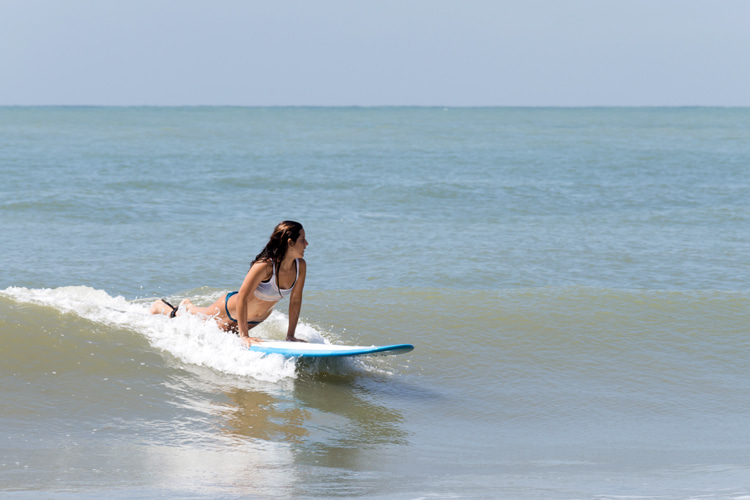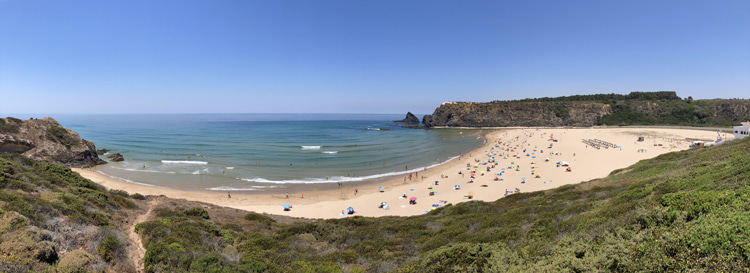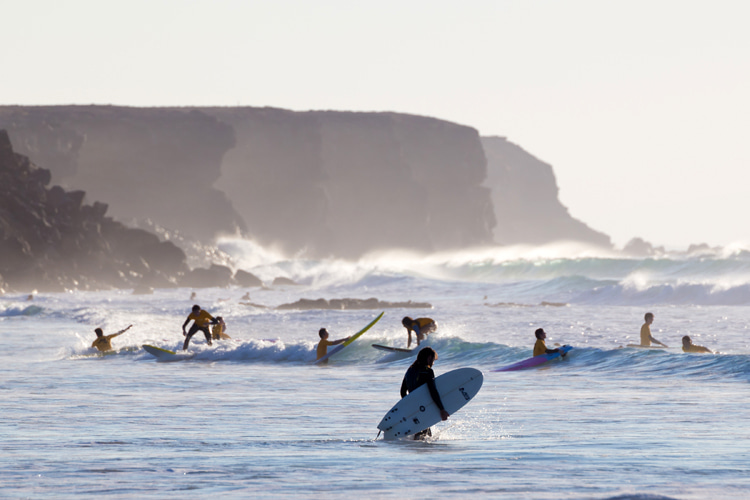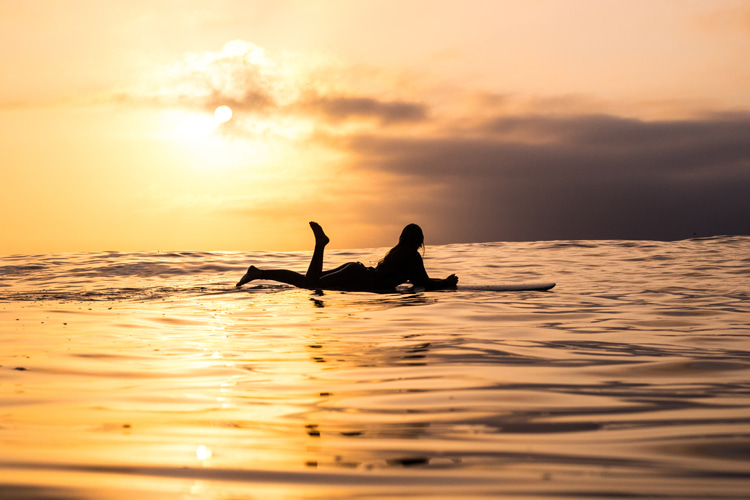I learned to surf in Portugal at the age of 35. As a person afraid of deep waters, I never thought I could ride waves.
Previously, I did not even think of trying it or checking if deep water is really a requirement for surfing.
But when I decided to give it a go, I discovered that the feeling of riding a wave is absolutely amazing, and I got addicted to it immediately.
Now, every morning, I wake up thinking about the next time I will be surfing.
The truth is that surfing is also helping me deal with fear, and now I panic less when I think about deep waters.
Apparently, it is a specific ocean-related phobia called thalassophobia.
Here is how I learned to surf:

1. Get Acquainted With the Ocean
Before starting to surf or even getting a board with you, you've got to learn to be OK with ocean waves.
I was not. As a Mediterranean woman, I was not acquainted with ocean waves - it's basically always flat and waveless.
So when I first took my first dip in the ocean to try surfing, I was petrified.
It took me 1-2 hours to accept that those strong three-foot waves breaking in front of me would not take me away or pull me under.
2. Get a Big Surfboard
Many people get too excited and have their first experience in the ocean with a small shortboard.
However, that's definitely not the way to get started, as it is hard to learn and find the balance in the early stages.
It is easier to get used to the stability, flotation, and basics with a long, wide, and thick board before transitioning to a smaller board with more experience.
3. Carry the Board to the Lineup Correctly
It's important to learn how to carry and get the surfboard to the lineup.
Doing it right will prevent you from getting tired quickly as you get past the breaking waves and whitewater.
If you randomly carry the board, waves will tumble over you and the board, and you will lose time and energy trying to reach the peak.
- Here's how to carry a big soft-top board or beginner foam surfboard properly to the surf zone;
- Keep the board by your left or right side, close to your hip, and perpendicular to the waves all the time;
- If it is white water coming in, just lift the nose of the board to prevent the board from flipping and hitting you on the face;
- If it is a small, unbroken wave, just float with the board while keeping perpendicular to the incoming ripple;
- Never keep the surfboard parallel to the wave, or you may hurt yourself;

4. Find Your Balance on the Surfboard
Practice lying on the board while no waves are rolling in, and take your time finding your balance.
To do so, when you're in the water, practice holding the board on both sides and do a tiny jump to get your body on top of it.
Finally, slide up or down to ensure most of your weight is in the middle-lower part of the surfboard.
5. Paddle Slowly and Effectively
Once you feel comfortable lying on the surfboard, it's critical to learn the correct way to paddle with no hurries.
It is typical to think that you must paddle very quickly to catch a wave. However, it is not necessary to spend that much energy.
Dip one arm at a time to paddle across the water at a sustainable pace. You don't need to rush - one stroke at a time.
6. Confront Your Fears
Focus on the point that makes you panic - for me, it was falling into the water without knowing the depth.
So, before standing on the board, I wanted to be comfortable falling into the water.
What I did was try bodyboarding first, i.e., catching the wave on the surfboard and riding it prone until I reached the shoreline.
It was the perfect strategy for getting used to the waves and wiping out.

8. Know When You Caught the Wave
Learning the feeling of catching the wave is also a crucial moment in the early surfing stages.
You've got to know when you've actually caught the wave; this was the easiest part for me.
You can only try to pop up when you're being carried by the wave's energy.
However, I have seen many people trying to get up on the surfboard too early and waves just passing by them.
I felt that if your speed is a bit faster than your paddling, then it means you've caught the wave.
9. Pop Up Progressively
After you are sure that you caught the wave, it's time to try to pop up.
My suggestion is that you first try and do a plank on the board.
Then - and I know that there are opposing strategies - quickly move one of your feet to the middle-upper area of the surfboard deck.
If you're OK with it and still going with the wave, raise your back foot and leg, keep a low stance, look in the direction you're going, and enjoy.
10. Do It Your Way
The last tip was absolutely relevant to my surf learning process.
Don't be obsessed with the "right way" of doing things. For example, I watched a couple of "how to surf" videos before giving it a go.
I was obsessed with the proper steps they showed about standing on the surfboard.
However, they did not work for me. So, I suggest you think about the final result, and your body will follow your brain.
Words by Reha Discioglu | Surfer and Product Manager
